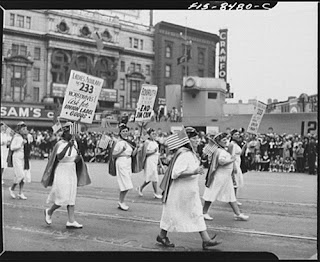Manti Te’o and Charles Woodson have nothing in common.
Actually, they both had spectacular college football careers, for two of the most
storied football programs (and finest universities) in the world. So there’s that.
But Charles Woodson won a Heisman Trophy.
And Manti Te’o hasn’t.
Yet.
And I say, give it to him.
The catch is, he only plays on defense.
It might help his case if he could run back a kick or two or
line up as a receiver and catch a couple of passes for touchdowns.
Offensive players get all the glory in football because they
score all the points. When it comes time
to vote for the Heisman, the most glorified award in college football, it’s
extremely rare that a defensive player wins.
Well, OK, it pretty much never happens. Charles Woodson (University of Michigan, 1997) did it, but he’s all alone. Out of 76 Heisman winners, he was the only primarily defensive player to
ever win the award.
But he wasn’t only a defensive player. He also ran back punts and played receiver,
and scored key touchdowns from those positions.
They call it playing on both sides of the ball.
It’s extremely infrequent in today’s era of sports specialization. It does happen at some smaller schools and in
high school, where the most skilled athletes are sometimes asked to play on
both sides of the ball.
Putting aside fear of injury for a second, why wouldn’t you
have more people going both ways?
Theoretically, wouldn’t you want your best athletes out there all the
time? Don’t you think they could access different
aspects of their physical abilities to make plays all over the field, in all
different situations?
I use the same theory when it comes to using creative thinking to solve challenges. Regardless of the type of
challenge—be it strategic or executional—wouldn’t you want to put your best
people on it, and put both sides of their brains on it?
You do have two sides, you know. You may not access one as much as the other,
but they’re both there ready and raring to go.
Don’t let people convince you that you’re good at only one
way of thinking. You may have been told you’re more inclined to be an
organizational, controlling, logical left brainer. Or an imaginative, artistic, emotional right
brainer.
I say you’re both.
Or you could be.
When it comes to working through a challenge, think all
around it. Expand your mind. Go places you didn’t think possible or
worthy. Read inspiring (and easy) books
like A Technique for Producing Ideas. Or
intellectually provocative white papers on big data. Go to an art museum. Read the New York Times. Or Cosmo.
Or People.
Play Halo. Play the
Piano. Play Sudoku. Go somewhere else, physically or mentally.
Be like Charles Woodson.
Make your brain go both ways. See
what glory comes to you.
And Manti Te’o, you’d have my vote right now if I had
one. But it sure would be easier if you
could catch one little pass for a touchdown…







